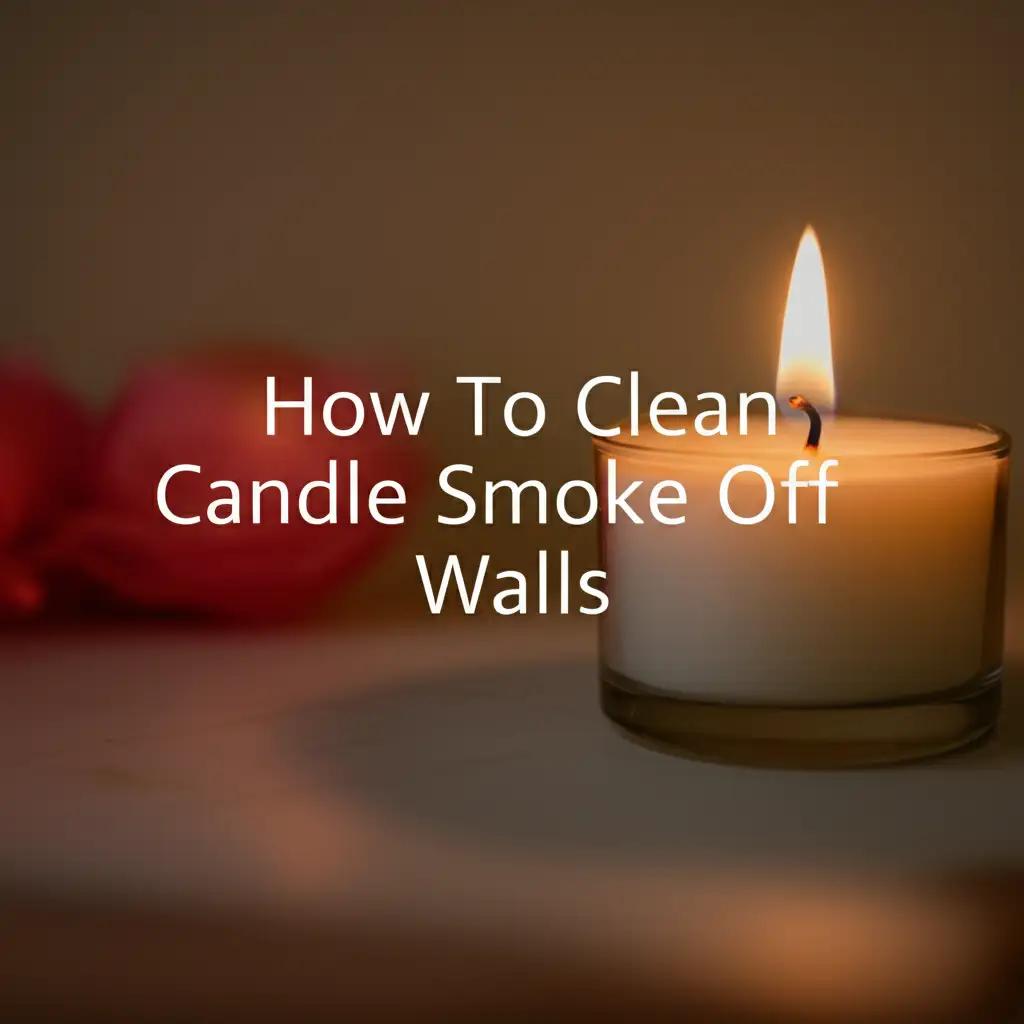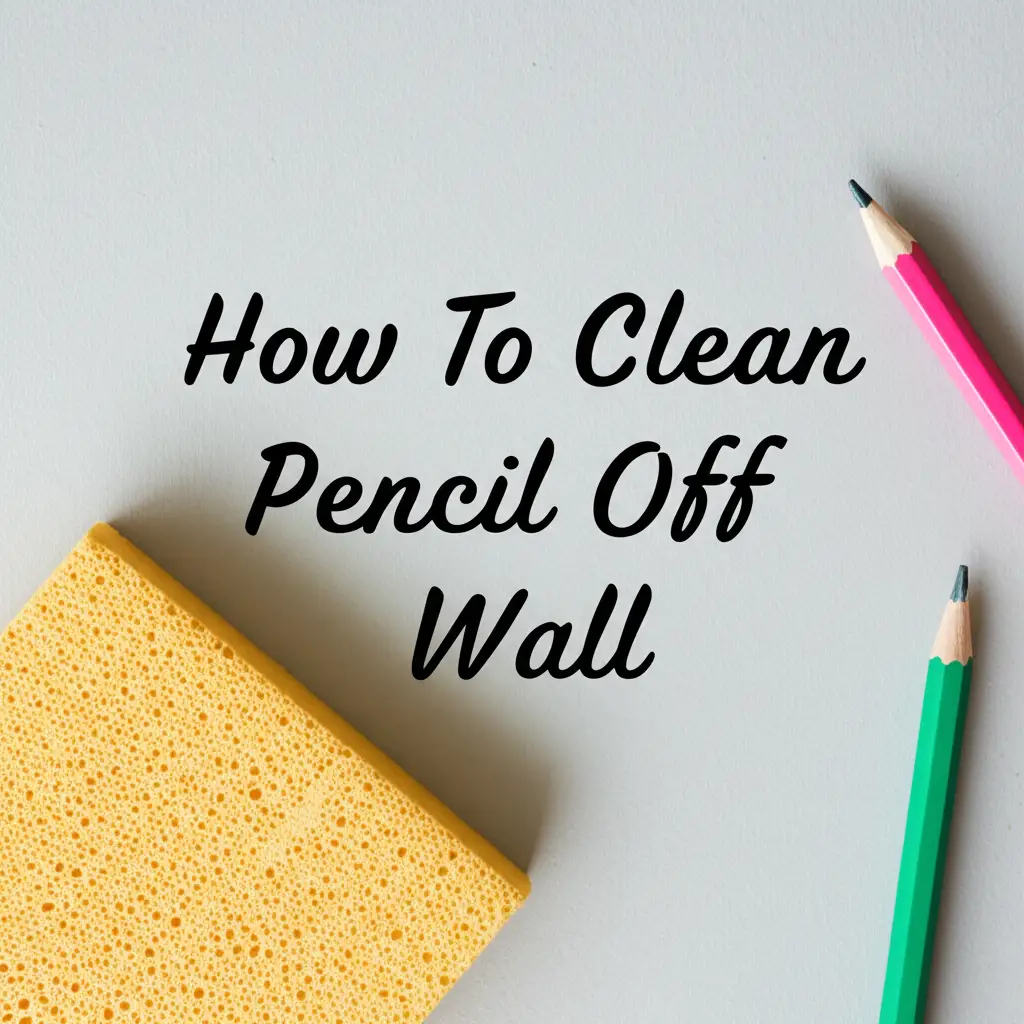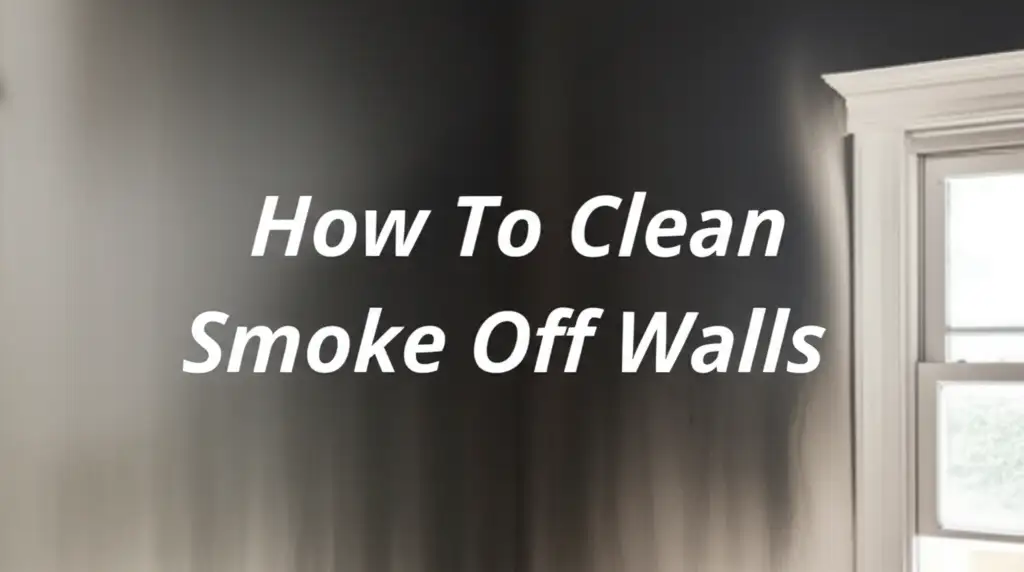· Home Cleaning · 14 min read
How To Clean Candle Smoke Off Walls

How To Clean Candle Smoke Off Walls: A Complete Guide
Candles create a cozy atmosphere in your home. However, they can also leave behind unsightly black marks. These marks are candle smoke stains. Smoke stains appear on your walls, ceiling, and even furniture. You might wonder how to clean candle smoke off walls without damaging the paint. It is a common problem for many homeowners.
Restoring your walls to their original state is possible. You need the right tools and techniques. This article provides a comprehensive guide. It covers everything from understanding soot to advanced cleaning methods. You will learn simple steps to remove those dark smudges. We will also discuss preventing future smoke buildup. Let’s get your walls looking fresh again.
Takeaway
- Act Fast: Clean candle smoke stains quickly to prevent permanent damage.
- Dry First: Always start with dry cleaning methods for light soot.
- Test Area: Apply any cleaning solution to a hidden spot first.
- Protect Yourself: Wear gloves and eye protection during cleaning.
- Prevent Future Soot: Trim wicks and ensure good ventilation.
To clean candle smoke off walls, first remove loose soot with a dry cleaning sponge or vacuum. Then, use a mild cleaner like dish soap and water, or a baking soda paste for tougher stains. Always test solutions on an inconspicuous area first, and ensure proper ventilation during the process.
Understanding Candle Smoke and Soot
Candle smoke is a byproduct of incomplete combustion. This means the candle wax does not burn completely. Instead, tiny carbon particles escape into the air. These particles form soot. Soot then settles on nearby surfaces.
Several factors cause incomplete combustion. A long wick is a common culprit. A long wick creates a larger flame. This larger flame often produces more smoke. Drafts can also disrupt the flame. This disruption leads to uneven burning and more soot. Poor quality candles with impurities also contribute. These impurities do not burn cleanly.
Soot is oily and sticky. It adheres to walls and other surfaces easily. This makes it challenging to remove. The longer soot stays on a surface, the harder it becomes to clean. Soot can also seep into porous materials. This causes deeper stains. Addressing candle smoke stains quickly limits damage. This action also makes cleaning easier.
Essential Preparation Before Cleaning
Proper preparation makes cleaning safer and more effective. Before you begin, gather all necessary supplies. This helps you work efficiently. You will need rubber gloves, safety glasses, and a dust mask. These items protect your skin, eyes, and lungs from soot and cleaning agents.
Next, protect your floor and furniture. Move any nearby furniture out of the way. If you cannot move an item, cover it with a drop cloth or old sheets. Lay drop cloths on the floor directly beneath the affected wall area. This protects your flooring from falling soot and cleaning solution drips.
Testing your cleaning solution is a critical step. Different wall types and paints react differently to cleaners. Always test your chosen cleaning method on an inconspicuous area of the wall first. This could be behind a door or a piece of furniture. Wait a few minutes after application. Check for any discoloration, paint removal, or damage. This simple test prevents larger problems. Learning how to clean walls without removing paint is important. This step helps ensure your wall finishes remain intact.
Good ventilation is also key. Open windows and doors in the room. Use fans to create airflow. This helps dissipate airborne soot particles. It also reduces exposure to cleaning fumes. Proper ventilation makes the cleaning process safer and more pleasant.
Dry Cleaning Methods for Light Soot
Begin your cleaning process with dry methods. This is crucial for light candle smoke stains. Dry methods remove loose soot without spreading it further. Using liquid first can smear the soot. This makes the stain larger and harder to remove.
A vacuum cleaner with a brush attachment is a good starting point. Gently run the brush attachment over the smoke-stained area. Do not press hard. The goal is to lift loose soot particles. Move slowly and systematically. This method removes the top layer of soot. It prepares the wall for deeper cleaning.
Soot sponges, also known as chemical sponges or dry cleaning sponges, are very effective. These sponges are made of vulcanized natural rubber. They pick up dry soot and dust like an eraser. Wipe the wall in one direction. Do not scrub back and forth. This prevents smearing the soot. When one side of the sponge becomes dirty, cut off the soiled part. Or, use a clean section of the sponge. These sponges do not require water. They are excellent for delicate surfaces.
For very light marks, a soft, dry microfiber cloth can work. Gently blot or wipe the affected area. Always use clean sections of the cloth. Avoid rubbing harshly. This prevents embedding the soot deeper into the wall. Dry methods are the safest first step. They prevent spreading the stain or damaging your wall’s finish.
Wet Cleaning Solutions for Stubborn Stains
Once you remove loose soot with dry methods, it is time for wet cleaning. This step addresses more stubborn candle smoke stains. Always remember to test your chosen solution on an inconspicuous spot first. This helps avoid potential damage or discoloration. Different wall types respond differently.
For mild to moderate stains, a simple solution of mild dish soap and warm water works well. Mix a few drops of dish soap into a bucket of warm water. Dip a clean, soft sponge or microfiber cloth into the solution. Wring out excess liquid. The cloth should be damp, not dripping wet. Gently wipe the stained area. Use light, circular motions. Work from the outside of the stain inwards. This prevents spreading the soot. Rinse the sponge frequently in clean water. Then reapply the soap solution.
Vinegar is a natural and effective cleaner for many household stains. It also helps neutralize odors. Mix equal parts white vinegar and warm water in a spray bottle. Lightly mist the stained area. Let it sit for a few minutes. Then wipe it clean with a damp cloth. For tougher stains, you can create a paste with baking soda and water. Mix baking soda with a small amount of water. Create a thick paste. Apply the paste to the stain. Let it sit for 10-15 minutes. Gently scrub with a soft brush or cloth. Then wipe it clean. Learning how to clean with vinegar and baking soda offers a versatile approach to many cleaning challenges.
For very severe, deeply embedded smoke stains, you might consider stronger solutions like Trisodium Phosphate (TSP). TSP is a heavy-duty cleaner. It is highly effective but requires caution. Always read the manufacturer’s instructions carefully. Wear heavy-duty gloves, eye protection, and a mask. Dilute TSP according to package directions. Apply it with a sponge or cloth. Rinse the area thoroughly with clean water afterward. TSP is very strong. It can strip paint if not used correctly. It is best for non-painted or very durable painted surfaces. When cleaning painted walls, focus on techniques that prevent damage. Understanding how to clean painted walls without leaving streaks ensures a professional finish.
Tackling Different Wall Surfaces
Different wall surfaces require different cleaning approaches. What works for one type of wall may damage another. Understanding your wall material is key. This helps you avoid costly mistakes.
Painted Walls: Most household walls are painted. The type of paint matters.
- Flat or Matte Paint: These finishes are porous. They absorb stains more easily. They are also more delicate. Use the mildest cleaning solutions first. Start with dry cleaning. Then try a diluted dish soap solution. Avoid aggressive scrubbing. Harsh cleaners or excessive rubbing can remove paint.
- Eggshell, Satin, or Semi-Gloss Paint: These finishes are more durable and less porous. They resist stains better. They are also easier to clean. You can generally use the dish soap solution or even a gentle all-purpose cleaner. Still, test in a hidden area. For specific blemishes, knowing how to clean marks off painted walls can be very helpful. If the smoke has caused significant discoloration, especially if the walls appear yellowed, learning how to clean yellow walls from smoke might offer more targeted solutions.
Wallpaper: Cleaning wallpaper requires extra care. Excessive moisture can loosen adhesive or damage the paper.
- Vinyl Wallpaper: This type is more durable and often washable. Use a damp cloth with a mild soap solution. Gently wipe the affected area. Avoid saturation.
- Non-Vinyl or Fabric Wallpaper: These are often not washable. For light soot, use a soot sponge very carefully. Avoid any liquid. If stains persist, professional cleaning may be necessary. Test a very small, hidden area first.
Textured Walls: Textured surfaces, like stucco or knockdown, trap soot more easily. Cleaning them can be challenging.
- Start with a vacuum with a brush attachment to get into crevices.
- A soot sponge can work well for surface soot.
- For wet cleaning, use a soft-bristled brush with your cleaning solution. Lightly scrub in small sections. Rinse thoroughly with a clean, damp cloth. Be careful not to damage the texture.
Brick or Stone Walls: These materials are very porous. Soot can penetrate deeply.
- Start by vacuuming with a brush attachment.
- For wet cleaning, a solution of TSP or a specialized masonry cleaner may be needed. Always follow product instructions carefully.
- Use a stiff brush to scrub the mortar lines and stone surface.
- Rinse thoroughly with clean water. You may need to use a spray bottle for rinsing. Ensure the area dries completely to prevent mold.
No matter the surface, work in small sections. Always rinse thoroughly to remove all cleaning residue. This prevents new streaks or residue buildup. Let the cleaned area dry completely before assessing the results.
Post-Cleaning Steps and Odor Removal
After cleaning the visible smoke stains, several steps ensure your walls are truly clean and fresh. Proper post-cleaning care prevents new problems. It also addresses lingering smells.
First, rinse the cleaned wall thoroughly. This step removes all cleaning solution residue. Residue can attract dirt. It can also leave streaks. Dip a clean, soft cloth into plain, clean water. Wring it out until it is barely damp. Gently wipe down the area you just cleaned. Repeat this process several times with fresh water and a clean cloth. This ensures all soap or cleaner is gone.
Next, dry the walls completely. Lingering moisture can lead to mold or mildew growth. Use a clean, dry microfiber cloth to blot the wall. You can also use fans to circulate air in the room. Open windows for better ventilation. Ensure the wall surface feels completely dry to the touch before considering the job finished. This might take a few hours depending on humidity and airflow.
Candle smoke leaves a distinct odor. Even after cleaning the visible soot, the smell might remain. This is because microscopic smoke particles can penetrate porous surfaces.
- Airing Out: The simplest step is to air out the room. Keep windows open for several hours or even days. Use fans to circulate fresh air.
- Odor Absorbers: Place bowls of white vinegar, activated charcoal, or baking soda in the room. These natural substances absorb odors from the air. Replace them daily until the smell dissipates.
- Cleaning Fabrics: If soft furnishings or curtains are nearby, they likely absorbed odors too. Clean these items according to their care instructions. Wash curtains, throw blankets, and cushion covers.
- Specialized Odor Removers: For persistent odors, consider commercial odor eliminators. Some sprays are designed to neutralize smoke odors. Follow product directions carefully.
- Sealing and Priming: In severe cases, where smoke has deeply penetrated the paint or drywall, you might need to seal the walls. Use an odor-blocking primer, such as a shellac-based primer. This product seals in the smoke particles. It prevents the smell from returning. Then, repaint the wall.
Addressing odors is a critical part of cleaning candle smoke. It ensures your home truly feels fresh and clean.
Preventing Future Candle Smoke Stains
Preventing candle smoke stains is much easier than cleaning them. A few simple habits can keep your walls free from soot. This saves you time and effort in the long run.
Trim Candle Wicks: This is the most important step. A long wick creates a larger flame. A larger flame produces more soot. Before each burn, trim your candle wick to about 1/4 inch. You can use a wick trimmer or small scissors. This simple action helps the candle burn cleaner and more efficiently.
Avoid Drafty Areas: Do not place burning candles near open windows, air vents, or high-traffic areas. Drafts can cause the flame to flicker erratically. This unstable flame leads to incomplete combustion. It generates more smoke and soot. Choose a calm, still location for your candles.
Burn Candles in Well-Ventilated Spaces: While avoiding drafts, ensure good overall ventilation. Burning candles consume oxygen. They also release microscopic particles. A well-ventilated room helps disperse these particles. This prevents them from settling on your walls. Open a window slightly. Or use a ceiling fan on a low setting.
Use Quality Candles: Not all candles are created equal. Cheaper candles often contain additives that burn less cleanly. Look for candles made from natural waxes. Examples include soy, beeswax, or coconut wax. These waxes typically produce less soot than paraffin wax. Also, choose candles with cotton wicks that are free of metal cores. Some metal cores can also contribute to soot.
Do Not Over-Burn Candles: Follow the candle manufacturer’s recommended burn times. Most candles should not burn for more than 3-4 hours at a time. Long burn times can cause the wick to mushroom. This creates more soot. Let the candle cool and trim the wick before re-lighting.
Clean Candle Jars: If you reuse candle jars, keep them clean. Remove any candle wax off glass from the rim or sides. This prevents old soot or wax from affecting new burns.
By following these simple prevention tips, you can enjoy the ambiance of candles without the worry of smoke stains. You will keep your walls cleaner for longer.
FAQ Section
Can candle smoke permanently stain walls?
Candle smoke can cause permanent stains if left untreated for too long. The oily carbon particles embed deeply into porous surfaces over time. This makes removal very difficult. Prompt cleaning greatly increases your chances of complete stain removal. Acting quickly is always the best approach.
What is a soot sponge and how does it work?
A soot sponge, also called a dry cleaning sponge, is made of natural rubber. It works by absorbing dry soot and dust particles. You wipe it across the surface. It lifts the soot without spreading it or requiring water. This makes it ideal for initial cleaning of light smoke stains.
Is TSP safe to use for cleaning smoke off walls?
TSP (Trisodium Phosphate) is a highly effective cleaner for severe smoke stains. However, it is a strong chemical. You must use it with caution. Wear gloves, eye protection, and ensure good ventilation. It can strip paint if not diluted correctly or rinsed thoroughly. Test it in a small area first.
How can I prevent black soot from candles on my walls?
To prevent black soot, always trim candle wicks to 1/4 inch before each use. Burn candles away from drafts. Use good quality candles made from natural waxes. Avoid burning candles for more than 3-4 hours at a time. Ensure the room has good ventilation.
When should I call a professional for smoke stain removal?
You should call a professional if smoke stains are extensive or severe. This includes cases where fire damage occurred. If you have delicate or expensive wall coverings, professional help is wise. If your cleaning efforts worsen the stain or damage the wall, seek expert assistance immediately. Professionals have specialized tools and knowledge.
Conclusion
Candle smoke stains on your walls can be frustrating. You now have the knowledge to tackle them. Start with dry cleaning methods for loose soot. Then move to wet solutions for deeper stains. Always remember to test products in a hidden spot. This protects your wall surfaces. Personal safety is also important. Wear protective gear. Ensure proper ventilation.
Cleaning candle smoke off walls does not have to be a daunting task. With patience and the right techniques, your walls will look clean again. More importantly, you can prevent future stains. Regular wick trimming, good candle placement, and quality candles make a big difference. Embrace these habits. You can enjoy the warm glow of candles without the lingering marks. Keep your home clean and beautiful. Start cleaning those walls today.
```json
{
"publishDate": "2025-07-10T00:00:00Z",
"title": "How To Clean Candle Smoke Off Walls",
"excerpt": "Learn how to effectively clean candle smoke off walls using simple methods and common household items. Restore your walls' appearance quickly.",
"image": "https://res.cloudinary.com/dky6urpy2/image/upload/v1752035233/blog_image_1752035233_rk5zmi.webp",
"category": "Home Cleaning",
"tags": [
"candle smoke",
"wall cleaning",
"soot removal",
"smoke stains",
"household cleaning tips"
],
"metadata": {
"canonical": "https://www.beacleaner.com/how-to-clean-candle-smoke-off-walls"
}
}- candle smoke
- wall cleaning
- soot removal
- smoke stains
- household cleaning tips




